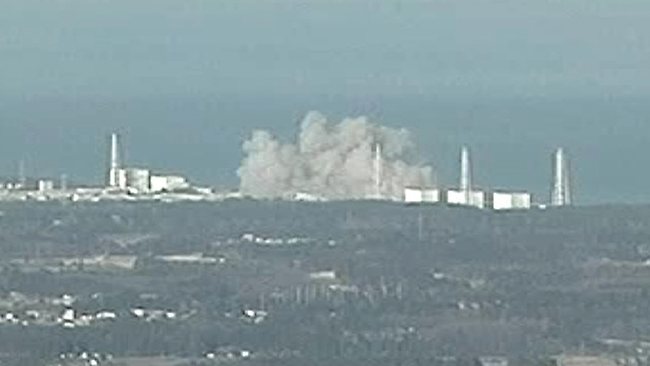photo: Herald sun / Screen grab from BBC footage of Fukushima nuclear power plant explosion.
By David Colburn
Staff Writer
With over 1,700 deaths, over 10,000 missing, and 215,000 re-located to emergency shelters, the current situation in Japan has proven to be incredibly bleak. Following the highly destructive 8.9 magnitude earthquake and subsequent tsunami of March 11, 2011, Japan faces yet another concern of safety; the possibility of a nuclear meltdown.
According to Voice of America, aftershocks of the Fukushima nuclear plant are still prevalent more than a day later. An explosion destroyed one of the plant’s nuclear reactor buildings, and Japanese authorities have urged all residents to move at least 20 kilometers (km) away from the site.
The Australian states that Fukushima No. 1 and No. 2 nuclear power plants have been declared emergency sites.
Government spokesman Yukio Edano has confirmed that the reactor and surrounding metal housing remain intact, and it has been stated that radiation levels around the facility did not rise following the blast. Iodine tablets are being distributed as a precaution against radiation poisoning. As stated by Voice of America, pressure in the reactor built to dangerous levels following the earthquake, which has increased the risk of radiation release.
Prime Minister Naoto Kan has recognized the severity of the situation, but Kan and other government officials have also stressed that the reactor is undamaged and no citizens have been affected by radiation. A 20km evacuation zone has been established around that particular reactor, yet Mitsuhiko Tanaka, a nuclear engineer who helped design the Fukushima No. 1 power plant, called for a 30 km evacuation zone due to the detection of cesium outside the reactor.
According to the Australian, the Nuclear and Industrial Safety Agency (NISA) has enlisted help from the Japanese military to increase the volume of water used to cool over-heating fuel rods. As stated within GlobalBC, metal on the fuel rods would not melt until temperatures exceed 1000 degrees Fahrenheit. The Union of Concerned Scientists has stated that a meltdown would ultimately occur in such conditions.
The current situation in Japan has brought forth comparisons to past nuclear incidents, but Russian scientists have stated that “there can be no Chernobyl-like disaster” at the Fukushima nuclear plant. According to Pravda.ru, Russian academician Yevgeny Velikhov of the Kurchatovsky Institute has stated that the absence of graphite prevents the possibility of another incident on the scale of the 1986 nuclear disaster in Ukraine, and Yaraslav Shromback has found a greater similarity to the Three Mile accident of 1979. Although the latter was ultimately a less severe situation than the former, it remains the most significant accident in the history of American commercial nuclear power generation.




